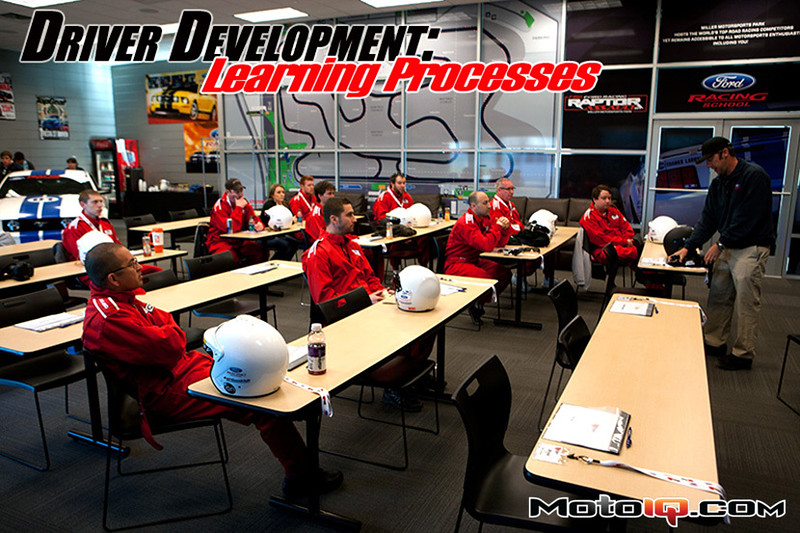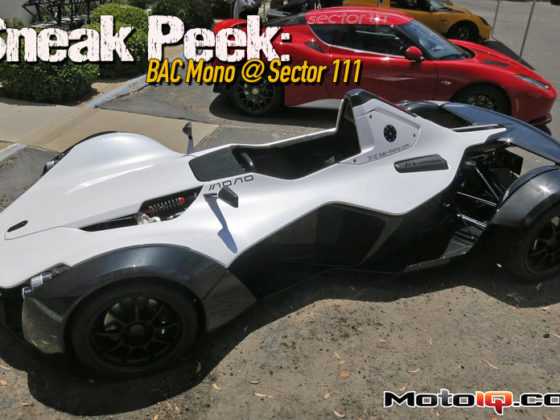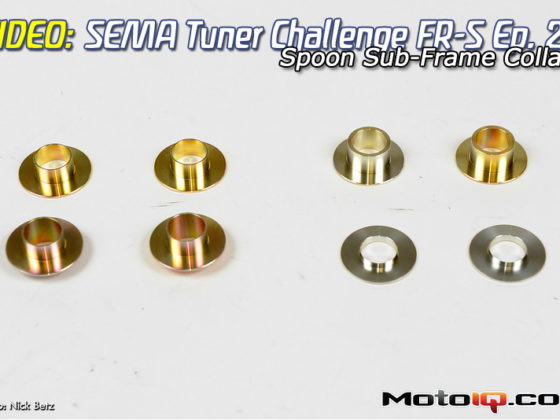
While watching in-car video is very helpful, there are some shortcomings. If the person analyzing the video isn’t the driver, they can’t recall what the car felt like or what the car is doing, and can only do so much to analyze the steering inputs, listening to tire noise, looking at how the car is moving around, etc… But a good coach can still be very beneficial when reviewing in-car video for even a highly advanced student or professional driver.
The feedback is not immediate so once the video is reviewed, that information needs to be applied in the next session. Short of timing different segments by hand (which is helpful but labor-intensive and inefficient), analyzing video tells you a lot about the subjective performance of car and driver without any hard facts or objective numbers. At the end of the day, in-car video analysis is an invaluable method for both students and coaches to reflect and see what happened inside the car and due to the price and simplicity, should be utilized at all times.
7 – DATA ANALYSIS
Data systems are invaluable tools that record exactly what took place while the car was running. This information can be measured 1-1,000 times per second (or more) and is a crucial tool in developing not only the car, but the driver as well.

Times have changed and data systems have come a long way in the last 20 years. They are pretty much a requirement in most levels of motorsport these days, even for the weekend warrior. Consider that in the 1980’s, Ayrton Senna’s Formula 1 car only logged four analogue and one digital channel with 16 kB of memory. I remember reading an article by race engineer Pat Symonds who told the story how he bought multiple stop watches and glued them to the steering wheel of Michael Schumacher’s F1 car so Michael could measure split times himself since timing systems were so primitive even in the early 1990’s. It’s pretty crazy to think that a $20 OBD Bluetooth adapter and the cell phone in your pocket can log thousands of times the amount of data that Senna and Schumacher had to work with in F1 cars only 20 years ago.

Most basic data systems these days record GPS speeds and G-forces. These are the basic necessities for a driver to analyze their lap time, segment times, how fast they are going, where they’re are braking, and how they’re taking a corner. Throttle position, brake pressure, and steering angle are the three next channels that will make up 99% of what a driver needs to know to work on their driving craft. From there the amount of channels you can measure are limitless, from water and oil temperatures, to pressures, to shock travels to load cell transducers, to anything you can possibly conceive.
Collecting, analyzing, and making educated decisions based off data is the name of the game for top level professional motorsports down to amateur club racers and track day drivers. As technology improves, many of these channels are now monitored by the factory computer and OBD port of modern street cars. In cars that were built in 2008 or newer (for most channels and post 1996 for the basics), a simple OBD adapter connected to your data logger can provide what usually costs thousands of dollars in harnesses and sensors in racecars.

A huge advantage of data acquisition is that through detailed analysis, you can see the impact of braking too late, getting on the gas too early and having to lift at the exit, and quantify everything with an objective time gain or loss. You can also have a coach drive your car and lay down a ‘benchmark lap’. From there you can see how close or far away you are in various corners, where you need to improve and where you should just work on being consistent. This is a great way to give the student a target to strive for.




3 comments
What is ur takes on karting to cars? Is practicing karts help racing cars? And what are the skills transferred from karts to cars.
Karting is excellent for racecraft and seat time. However, Karts don’t have suspension, and the dynamics of a car moving around on springs and dampers bring a lot of complexity that Kart’s don’t really help prepare for. Most professional drivers started in Karts and moved into Formula style cars, which is a more natural transition than from say, Karts into sedan racing.
Overall, it’s very helpful (especially racecraft) but not a necessity.
Great article Billy! Your support of motorsports at the amature/hobbiest level is much appreciated. Ive been watching my own videos recently and am picking up things I never realized, mostly a lack of consistency in braking. Understanding that all the aspects of driving the car are interdependant, I am nonetheless trying to prioritize the things that need correction. It seems I would gain more speed focusing on corner exit and thus entry and braking prior to the turn. Am I correct in working backwards? Your thoughts are appreciated and thanks again!